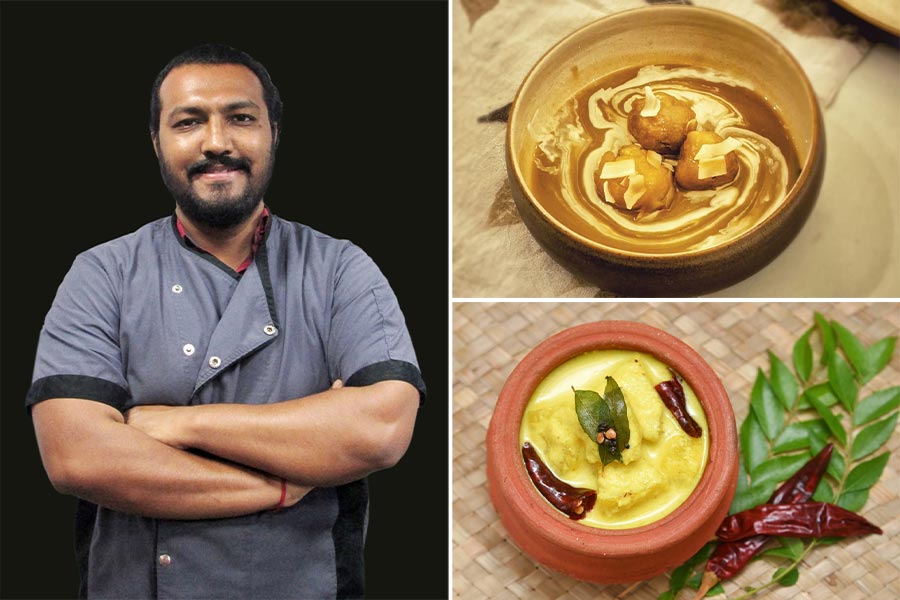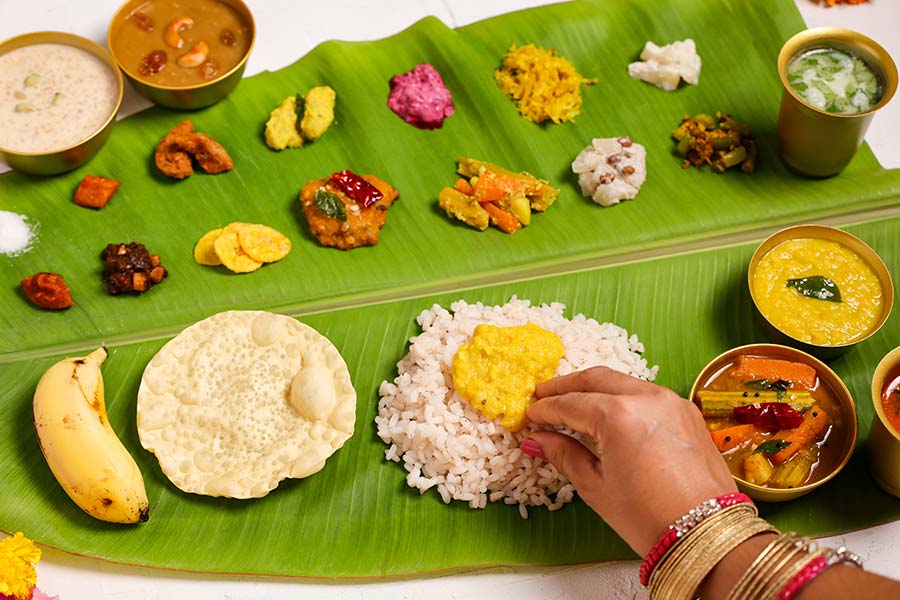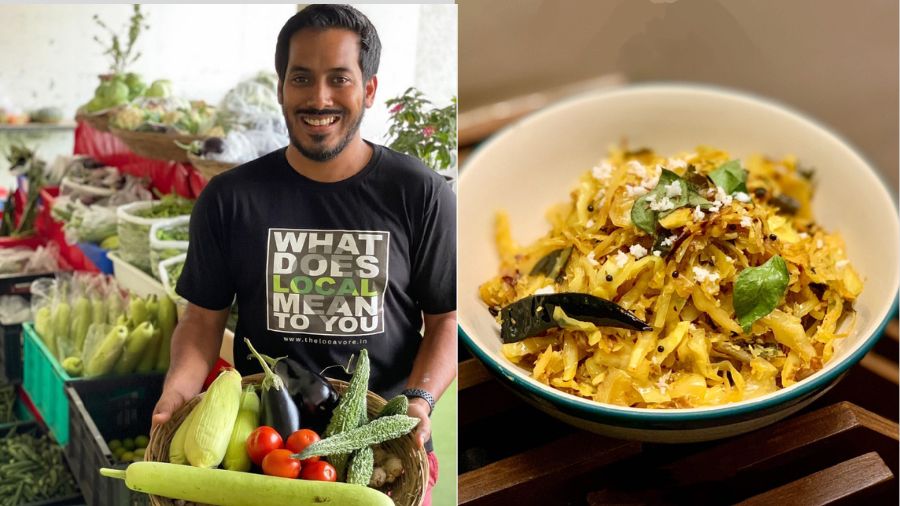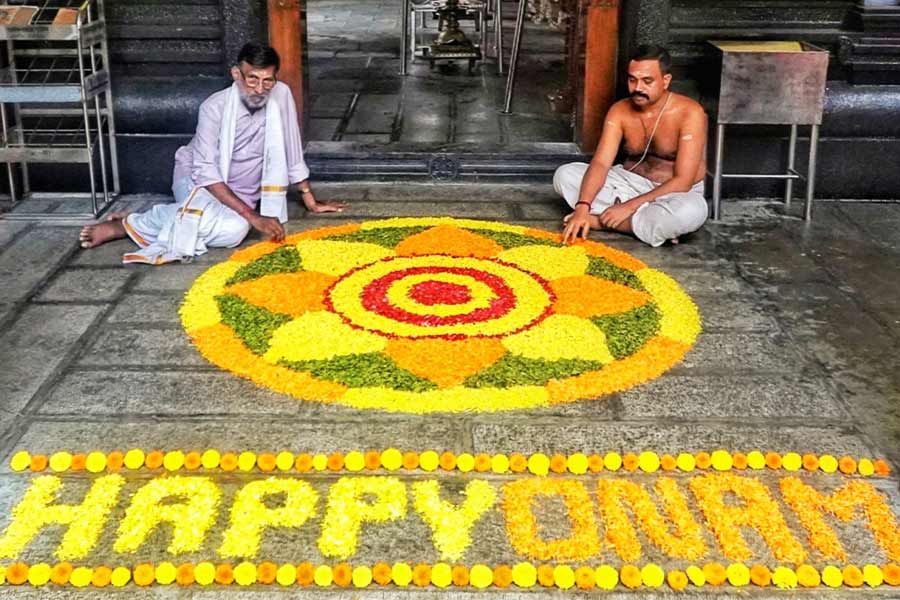Onam celebrations in Kerala and outside it are incomplete without the traditional multi-course Onam sadya. Traditionally served on a banana leaf, this vegetarian meal holds a special place in the festivities. To spread the joy of Onam, My Kolkata got in touch with chef Piyush Menon of the pop-up kitchen Coastal Macha in Jodhpur Park for some sadya recipes.
Born in Kota and brought up in Bengaluru, Piyush Menon’s family roots lie in Ernakulam in Kochi. He moved to Kolkata in 2015 and began Coastal Macha, a restaurant at Gariahat. The sadya was one of the most popular dishes that attracted customers to the restaurant during Onam. And even after the restaurant closed in 2020, Piyush continued with a pop-up/pop-out kitchen in Jodhpur Park under the same name and every Onam he makes a traditional sadya. “The sadya is a significant part of Onam celebrations. Last year I made mini sadya and it received an overwhelming response. At Coastal Macha, people used to ask for Onam sadya even when it wasn’t Onam,” said the chef.
While the sadya had to be given a miss this year as the chef is busy with an upcoming Anglo-Malabar pop-up, he shared the recipes for Pineapple Pachadi and Kozhukkatta (jaggery stuffed rice balls) in sweet coconut milk that can be a part of your own Onam sadya at home.
Pineapple Pachadi
Pachadi loosely translates to chutney in Malayalam. According to Piyush, while many people know of the different varieties of coconut chutney, those are usually mostly served with breakfast dishes like idli, uttapam, idiyappam or dosa.“The Onam sadya is a lunch affair and the chutneys or pachadis are made keeping in mind the other offerings. The pineapple pachadi is a great accompaniment with rice as it’s a perfect balance of sweet and tart, and has a kick from the tadka of curry leaves and along with the flavour of pineapple.”
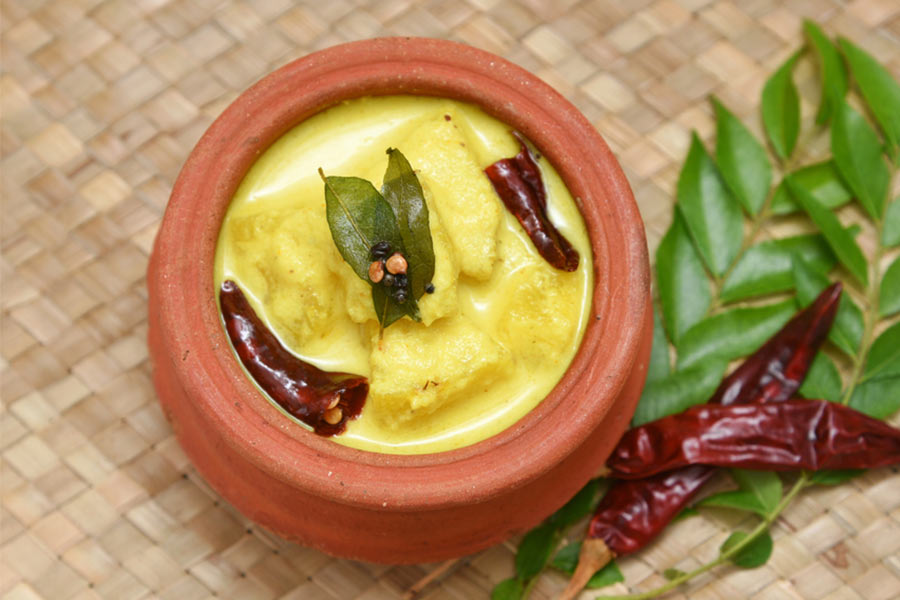
Shutterstock
Ingredients
- Pineapple: 2 cups roughly crushed/pureed
- Turmeric powder: 1 tsp
- Chilli powder: 1 tsp
- Salt to taste
- Sugar: 2 tsp
- Curd: 1 cup
For coconut paste:
- Coconut: ½ cup
- Cumin seeds:1 tsp
- Green Chilli:1
For tempering/seasoning:
- Oil: 1 tbsp
- Mustard seeds: 1 tsp
- Cumin seeds: 1 tsp
- Asafoetida (hing): ¼ tsp
- Curry leaves: 1 spring
Method
- Add the crushed pineapple to a wok and heat it up
- Add turmeric powder, chilli powder, salt, sugar and mix well
- Cover and cook for 5-10 minutes until the pineapple is cooked
- Meanwhile make a smooth paste out of coconut, cumin seeds, and green chilli by adding some water
- Once the pineapple is cooked add the coconut paste and cook for 5 more minutes
- Turn off the flame and add the curd. Mix well
- In a separate pan or a tempering/tadka pan, heat oil and add some mustard seeds, cumin seeds, asafoetida and curry leaves and let them crackle
- Pour this over the pachadi and mix well
- Serve this with rice and papadum
Kozhukkatta in sweetened coconut milk
This payasam-like sweet dish of rice and jaggery dumplings in sweet condensed milk is a family recipe. “It is a traditional sweet served on Sundays by St. Thomas Christians or Syrian Catholics. This version, with the sweetened coconut milk, is not traditionally served in Onam in a lot of places but I personally love this payasam as it brings back fond memories of my childhood days. It also resembles dudh puli from Bengal. My father is from Kerala and my mother is from Bengal and I always felt that this dessert is a perfect marriage of two states!”
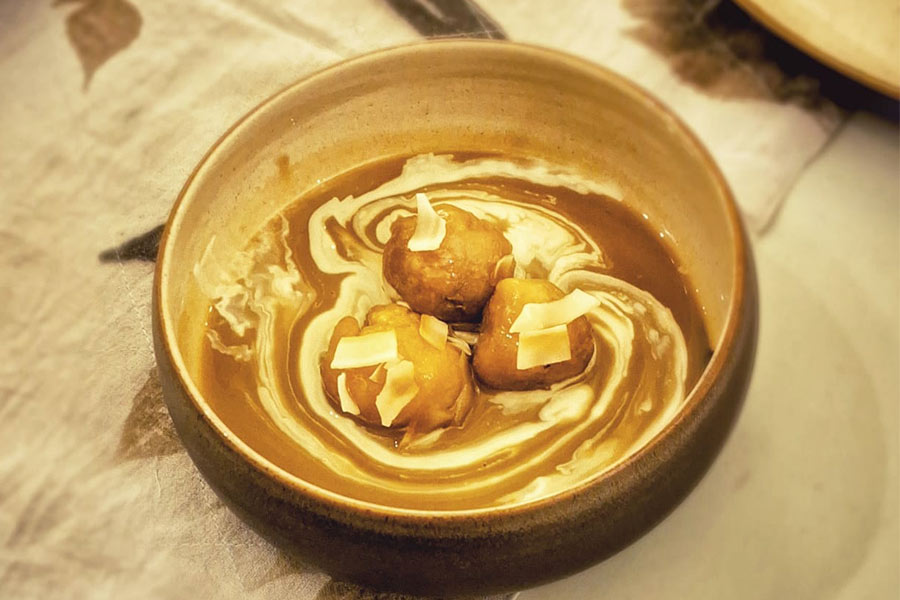
Courtesy Piyush Menon
Ingredients
For the filling:
- Jaggery or dark brown sugar: 3/4 cup
- Grated coconut: 1 1/2 cup
- Cumin seeds: 1/2 tsp ground
For the dough:
- Roasted rice flour: 1 and 1/4 cup
- Water: 1 cup
- Coconut milk: 1/2 cup
- Salt: 1/4 tsp
- Coconut oil: 1 tsp (You can also use a neutral fragrance-free oil)
For the sauce:
- Thick coconut milk: 1.5 cup
- Sugar: 75gms
- Green cardamom: 10 pods, seeds only, ground
Method For the filling:
- Put a skillet on medium flame, add the jaggery and 2 tbsp of water
- After about 1 minute, the jaggery will dissolve and start to bubble. At this point, add in the grated coconut and ground cumin
- Continuously mix this on medium heat until most of the moisture evaporates and the jaggery sticks to the coconut
- Set aside
For the dough:
- In a skillet add the water, coconut milk, and salt and turn the heat to medium-high. Allow this to come to a low boil
- Little by little and with a mixing spatula ready in hand, pour in the toasted rice flour and mix to begin forming a dough. It will look crumbly at first, but will slowly start coming together as the liquids absorb into the flour.
- If it is still too crumbly, add some warm water
- Once the dough starts coming together add the coconut oil and continue mixing until the dough is fully combined and soft to the touch
- The dough should hold its shape when pressed
Forming the Kozhukkatta:
- Transfer the dough to a clean counter surface and let it rest for about a minute before kneading the dough well for 2-3 minutes
- Separate the dough into about 10 lime-sized balls
- Rub your hands with coconut oil and roll the dough pieces into a round ball
- Use your thumb to press into the centre of the ball. Gently rotate and press the dough outward until you have formed a little bowl
- Be careful to not press the dough too thin or else it will crack while steaming
- Add about a tbsp of the jaggery coconut filling to the little dough balls
- With your hand cupping the dough bowl, squeeze your fingers forward to fold the bowl, then pinch the opposite sides to start closing the seam and forming a round ball
- Ensure it is sealed and then place them into a steamer for 10 minutes
For the sweet coconut milk sauce:
- Add thick coconut milk to a skillet and start simmering it
- Make sure not to get it into a rolling boil but just to the point when you see the vapour
- Mix in the ground cardamom and sugar until dissolved
- Check for consistency before turning off the flame
- In a bowl add the coconut milk sauce and the steamed rice ball
- Serve it hot or cold
